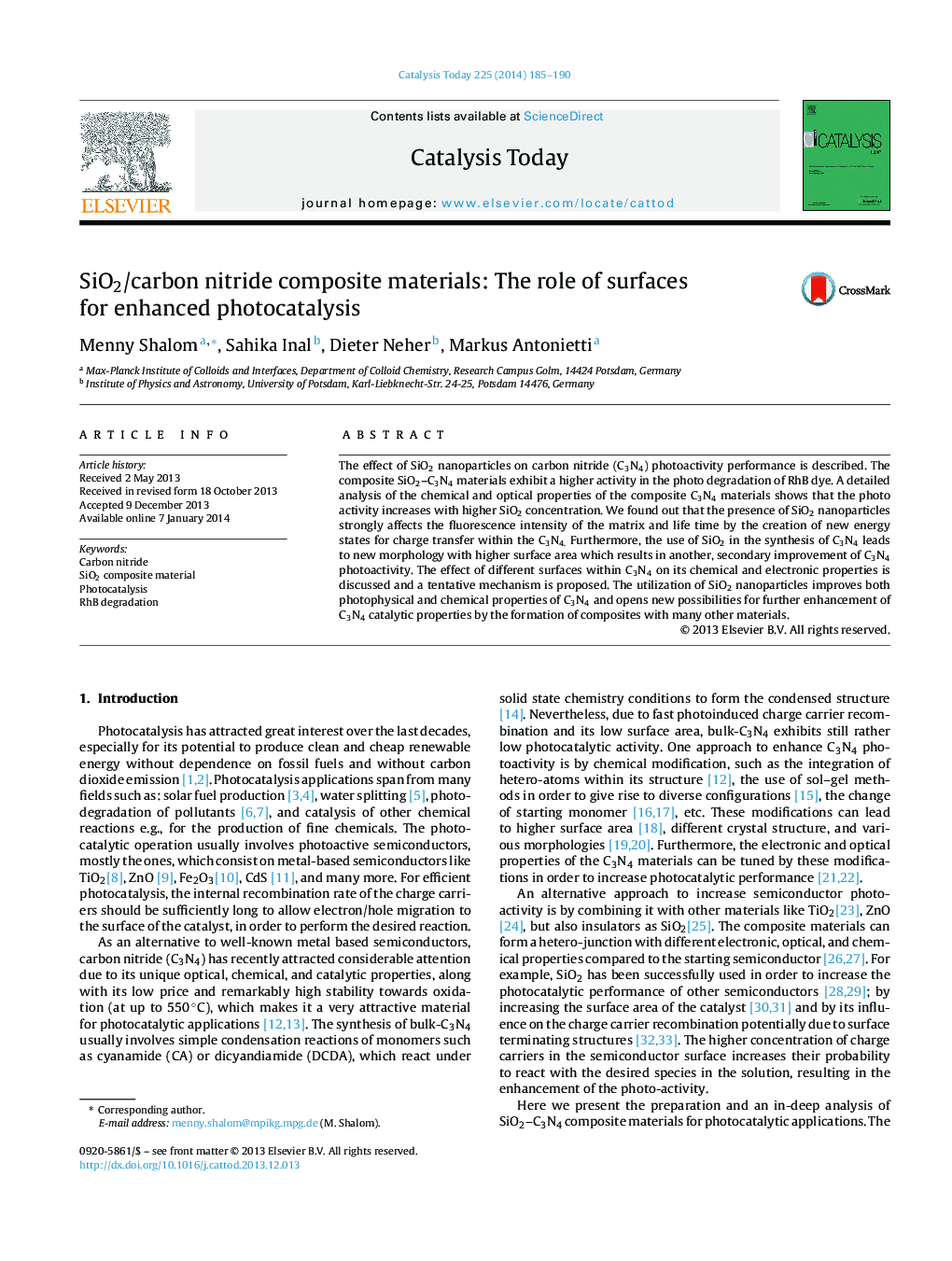| Article ID | Journal | Published Year | Pages | File Type |
|---|---|---|---|---|
| 54301 | Catalysis Today | 2014 | 6 Pages |
•Carbon nitride is a powerful visible light catalyst made from simple organic molecules, only.•Its activity can be remarkable improved when materials interfaces to silica nanoparticles, an inert insulator, are present.•This is coupled to the suppression of fluorescence and significant shortening of fluorescence lifetime.•This effect is quantified for a variety of systems.•The final figure of merit is the model reaction of rhodamin B decomposition where decomposition speed is remarkably accelerated.
The effect of SiO2 nanoparticles on carbon nitride (C3N4) photoactivity performance is described. The composite SiO2–C3N4 materials exhibit a higher activity in the photo degradation of RhB dye. A detailed analysis of the chemical and optical properties of the composite C3N4 materials shows that the photo activity increases with higher SiO2 concentration. We found out that the presence of SiO2 nanoparticles strongly affects the fluorescence intensity of the matrix and life time by the creation of new energy states for charge transfer within the C3N4. Furthermore, the use of SiO2 in the synthesis of C3N4 leads to new morphology with higher surface area which results in another, secondary improvement of C3N4 photoactivity. The effect of different surfaces within C3N4 on its chemical and electronic properties is discussed and a tentative mechanism is proposed. The utilization of SiO2 nanoparticles improves both photophysical and chemical properties of C3N4 and opens new possibilities for further enhancement of C3N4 catalytic properties by the formation of composites with many other materials.
Graphical abstractFigure optionsDownload full-size imageDownload high-quality image (157 K)Download as PowerPoint slide
